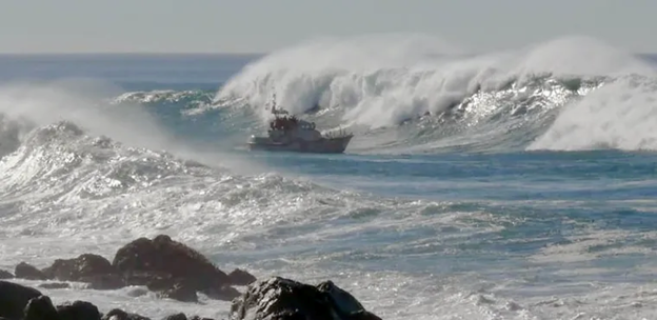Box Canyons: Avoid Entrapping Yourself
CCA Safety Moment for January 2022
Chuck Hawley, San Francisco Station
Geologically, a box canyon is defined as one that has nearly vertical sides and a flat bottom perhaps made from sand or soft material that’s carved by streams over thousands of years. The famous horse-riding scenes from Indiana Jones and the Last Crusade take place in a box canyon, for example.
Pilots have a different definition: a box canyon is a dangerous combination of a rising canyon floor (thus less distance between the plane and the ground) and a narrowing of the space in which you can turn the aircraft. If the pilot doesn’t recognize the danger in enough time, they can run into the canyon walls or floor while trying to turn around. Thus, the admonition of “don’t fly into a box canyon” is repeated often to new pilots.
But what about sailors? Do they also have box canyons that they should avoid? I think that many of us, in moments of uncharacteristic honesty, could think of times when we acted impetuously and didn’t think everything through before we entered a harbor, or dropped an anchor, or chose to pass in front of an apparently slow-moving commercial vessel. Here are a few examples when a moment’s hesitation might be justified.
- Many harbors along the California coast are known to have breaking waves in their channels, especially when they lead to a large estuary that can ebb against the prevailing winds with a healthy amount of current. The breaking waves are hard to determine from seaward, however, and they may only be present when a “set” of waves arrives. This was the situation at Santa Cruz Harbor last year, when an ill-timed return to the harbor caused four of six dinghies to capsize while under tow. Leading up to the decision to enter the harbor, it had appeared calm, until the set of swells appeared. The time between sets can be many minutes, so patience is a virtue before acting.
Photo courtesy of Dr. Abalone of the Morro Bay entrance
- Sailing into confined channels can be fun; weaving through traffic while demonstrating your steering and sail-handling skills. The problem is that sailboats under sail are difficult to slow down, and almost impossible to stop, and a sudden puff of wind can accelerate a sailboat from a leisurely pace to an unsafe one. Show some restraint.
- No one consciously anchors where their anchor or rode might damage coral, (no CCA member at least), but in the haste to anchor close to the restaurant, or away from the houseboat full of fraternity brothers, you might assume that the light-colored patch of water beneath you is coral-free. After you don your mask and fins, you may be in for a rude discovery when you find that the light patch is not sand, but something living and imperiled. This is a great reason to take a mooring where they are available, pay the mooring fee, and to avoid anchoring where you might damage the seabed (or do your diving inspection prior to lowering the hook.)
- There are times when, despite your knowledge of the Rules of the Road and your keen observation of what vessels around you are doing, you cannot figure out what a commercial vessel is doing in a channel or port. But you’re in a hurry to grab some dock space at the waterfront restaurant, and you’re going to be late for your reservation. The temptation is to hope that the other vessel’s intentions will become more obvious if you just continue at seven knots up the channel.
This is a bad idea. Distances disappear quickly at hull speed, options evaporate, and your intentions may be as confusing to the other vessel’s skipper as his are to you. Slow the heck down. Bring the bow a little towards the wind so you can maintain your heading. Take some time to look around to see if there is a third, or a fourth boat that is involved in the situation. You may not be able to see what the other skipper sees; give the situation a little time to sort itself out.
- Finally, while most of these examples are when you rush into things, like harbors, you should also be cautious to rush out of things. If you arrive to the boat late, with a falling tide and fireworks in 30 minutes, and you haven’t been aboard for a couple of weeks, take the time to make an orderly, planned departure. Switches in the correct positions? Second-in-command identified? Shore power disconnected? Life jackets on? Fuel OK? Gear stowed and not lying on the cabin sole?
Too many of us are impatient because we don’t want to be the skipper who caused the rest of the crew to miss the boat parade or fireworks or even the start of a race. Take a moment to go through your pre-departure checklist and accept the blame for being late. And shouting won’t get back the time that you need.






